JAPANESE CRAFTSMANSHIP: BAMBOO WEAVING
In The Quiet Backstreets Of Kyoto's South Higashiya, Find A Master Craftsman
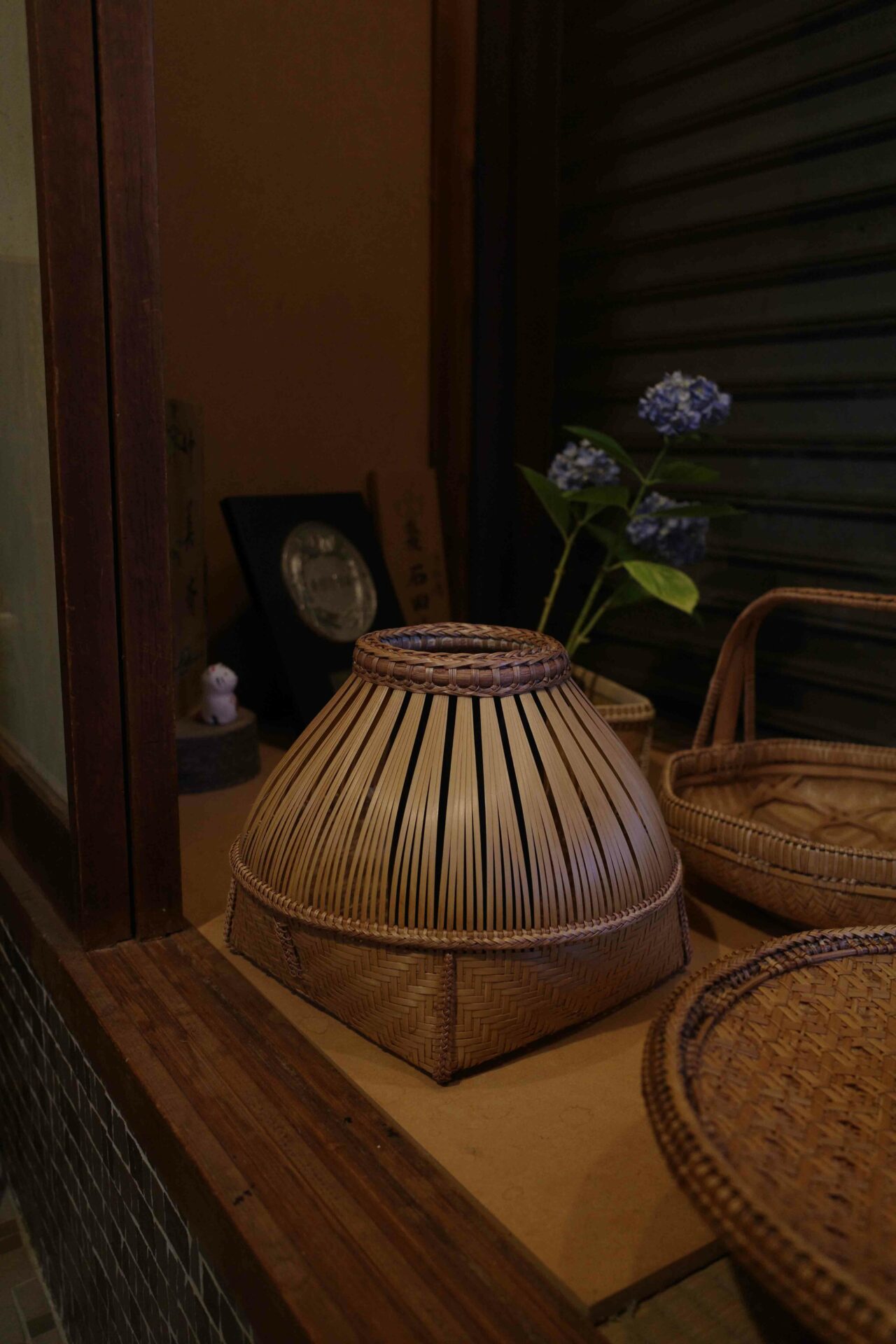
During an early morning jog through the backstreets of Kyoto’s Gion, when the streets are zen and quiet, approximately when the fishmongers begin washing their stalls or elderly neighbours begin sweeping leaves off of the streets, is when you can discover the city’s hidden depths.
As a shop window with an array of exceptionally-crafted bamboo crafts on display caught my eye, I noticed a craftsman quietly working away on the base of a bamboo basket. As his fingers interlocked to form the tight and intricate weaves, he glanced over and as I expressed, “you works are beautiful”, he joyfully smiled with a modest gratitude.
Ishida Takemi (石田武美), a second-generation bamboo craftsman in Kyoto, now at 77 years old shows no signs of slowing down. Honoured with an Order of Chivalry Yellow Ribbon Medal (黄綬褒章) in 1991 as a master craftsman awarded by the National Cabinet Ministry — one of Japan’s highest honours — Ishida is also an educator at Kyoto Seika University and furthermore teaches six students at his atelier. His tatami-floored workshop has welcomed numerous guests including esteemed members of the Imperial family to even Issey Miyake designer Naoki Takizawa, who enlisted Ishida to create bamboo garments for his 2006 Spring/Summer collection. The latticed skirts and structured bodices presented a wearable sculpture of the body, handmade with the organic tension of bamboo, carefully crafted by Ishida who delightfully took on the challenge.
The beauty of the natural material bamboo is endless. With over 1200 varieties found worldwide, 600 are found within Japan, each with their own strengths and properties suited for architectural detailing or functional objects woven so intricately they are viewed as art.
In Ishida’s tatami-floored workshop there are various samples and prototypes of his hand-woven works, from vessels commonly used in ikebana flower arranging to utensils for traditional Japanese tea ceremony such as cha-shaku. Ishida himself particularly specialises in traditional basket weaving of karamono (flower baskets) and Jidai-mono baskets. The karamono basket holds a history that dates back to China’s Song and Yuan dynasties, who transported the items to Japan during the Muromachi period. Known for their intricate silhouettes and elaborate weaving, karamono baskets are formed from numerous techniques utilising bamboo and rattan to create detailed works akin to art. Jidaimono baskets are equally as impressive, known as traditional folk pieces, they were daily items often used by commoners. One such item being a woven bamboo bag, its handles bent at a right angle, requiring a high amount of skill in execution.
Ishida’s wife Nagomi is quick to greet me whilst taking pride in her omotenashi (the art of Japanese hospitality) when guests arrive to the atelier, offering a seasonal monnaka okashi (red bean sweet in a rice wafer) and iced green tea served in a cup placed on a placemat woven by her husband. Nagomi notes that in summer, lighter bamboo cup placemats are used, whereas in winter the darker, black bamboo are brought out. She is elegant and gracious, with a delicate and deep sense of traditional Japanese culture herself, having trained in Ikenobo ikebana art of flower arranging and now a teacher herself at the Yamamura Guryu School. In the shop front window sits her arrangement of seasonal spring purple hydrangea’s positioned in one of her husband’s woven vessels.
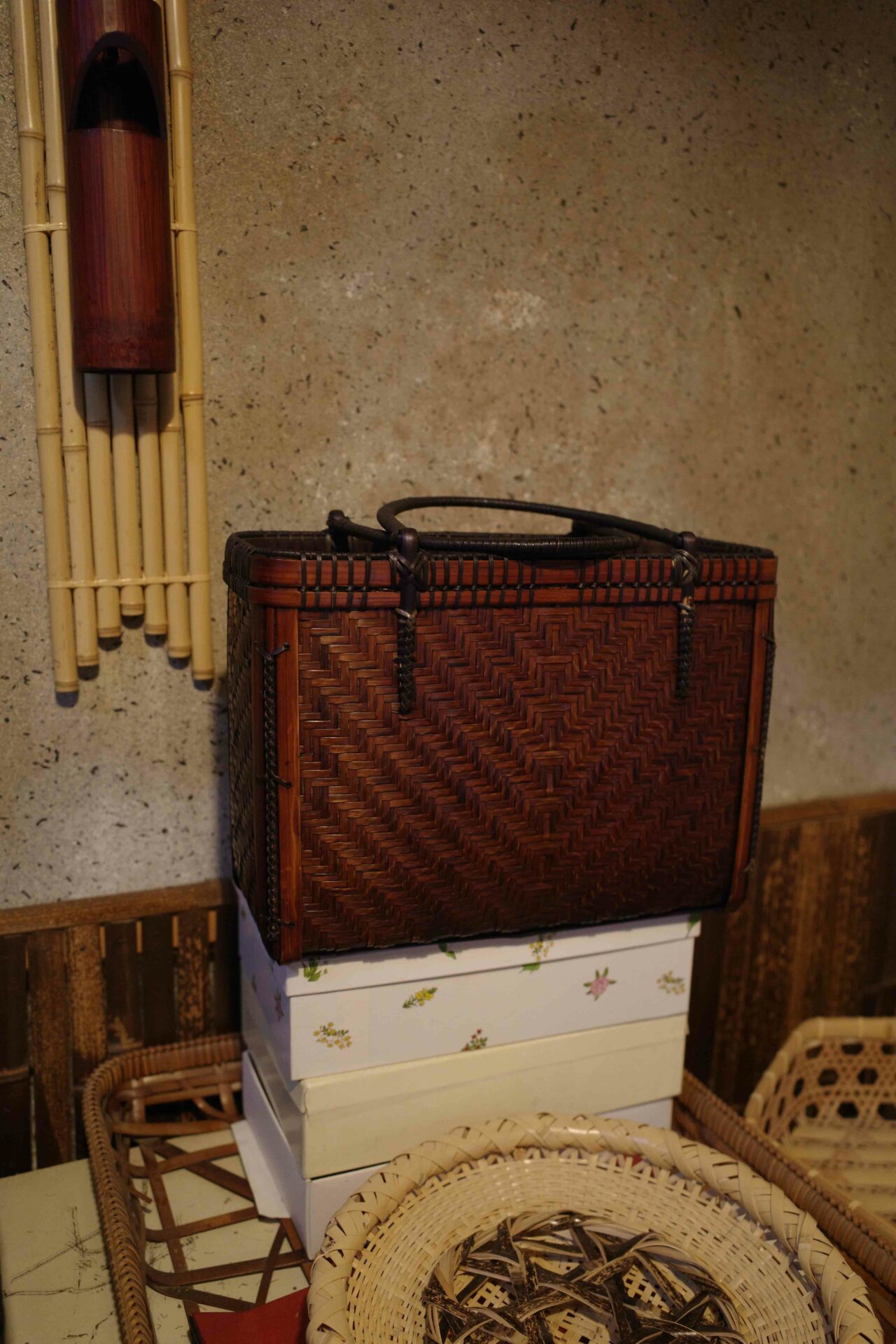
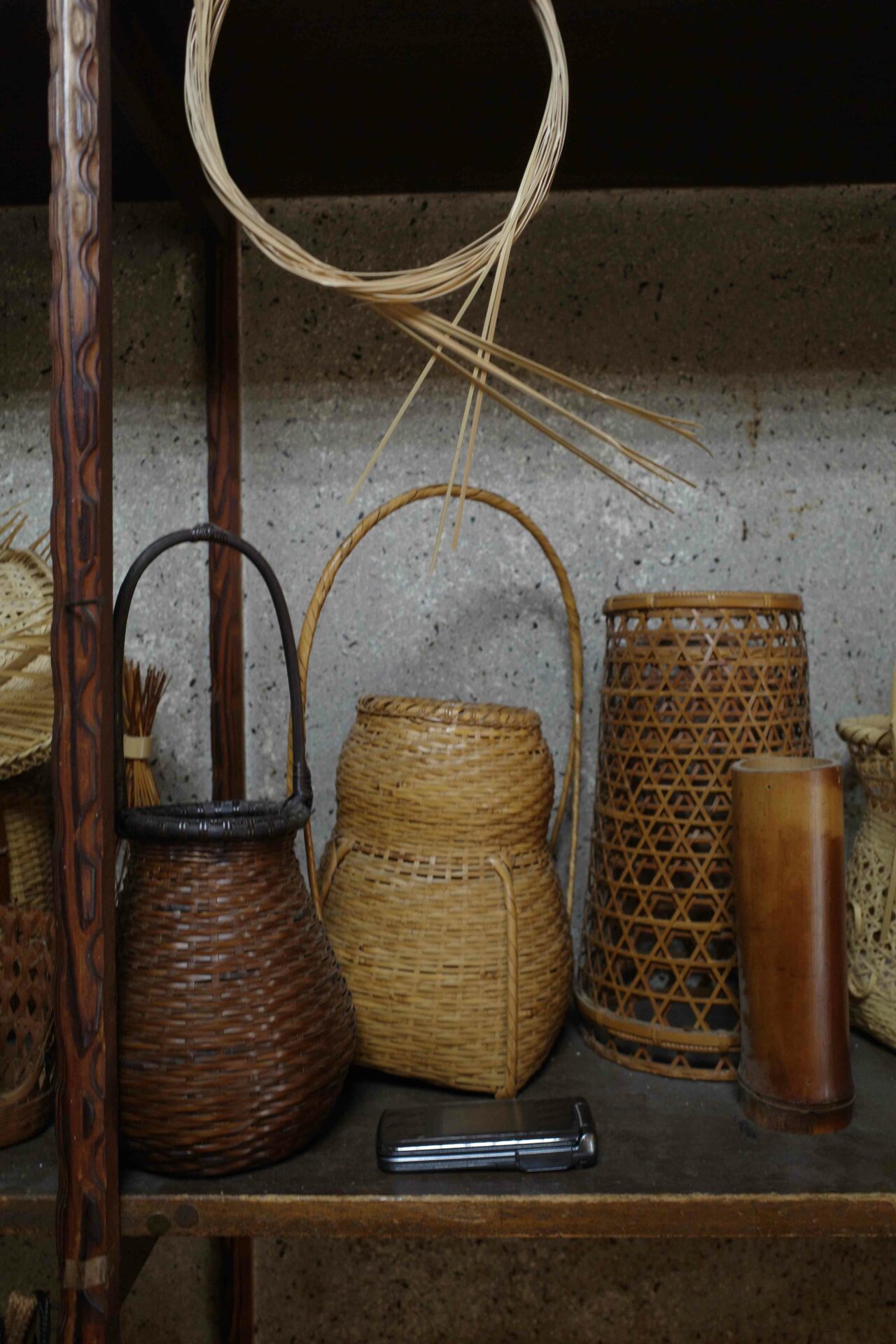
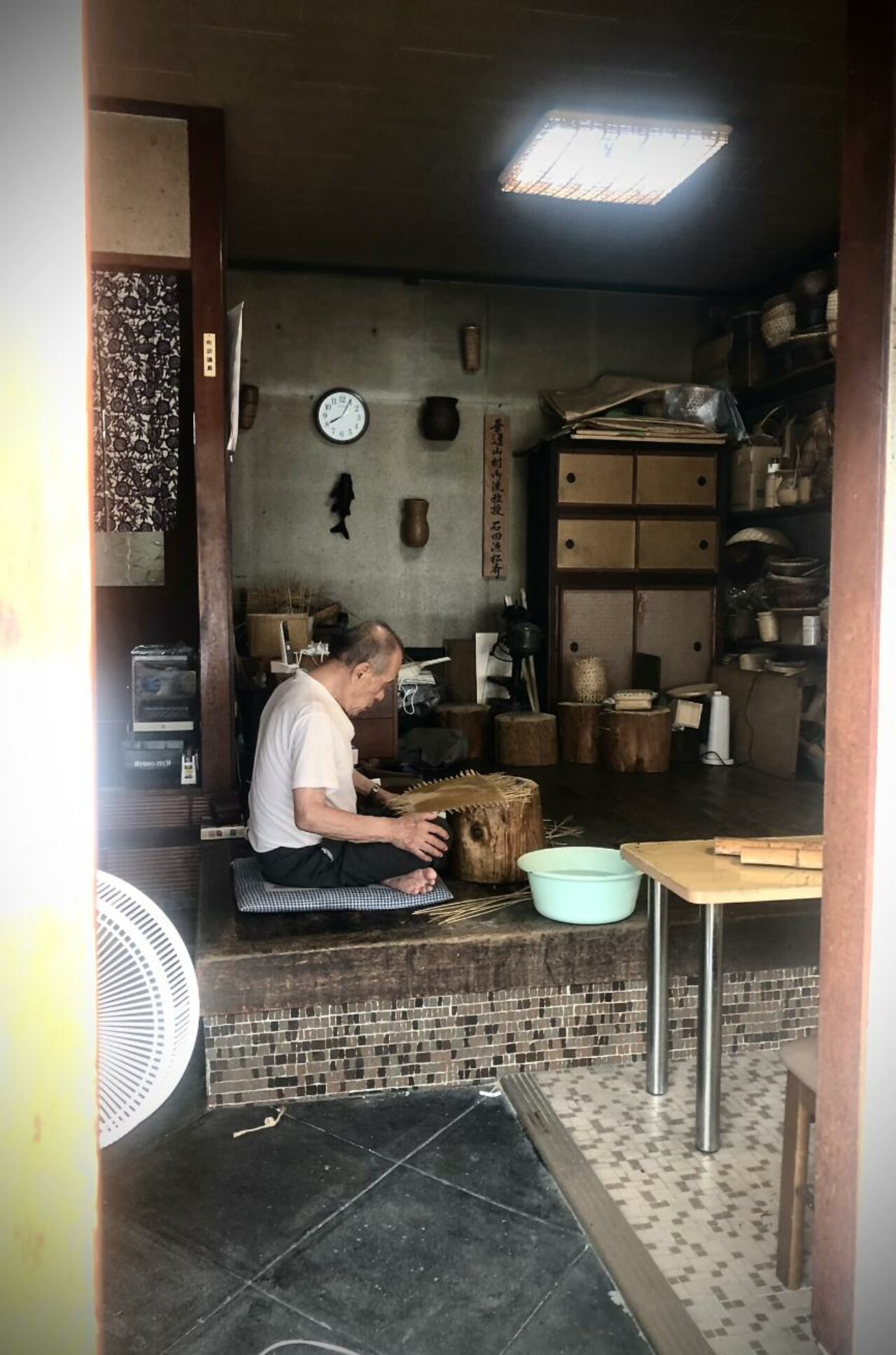
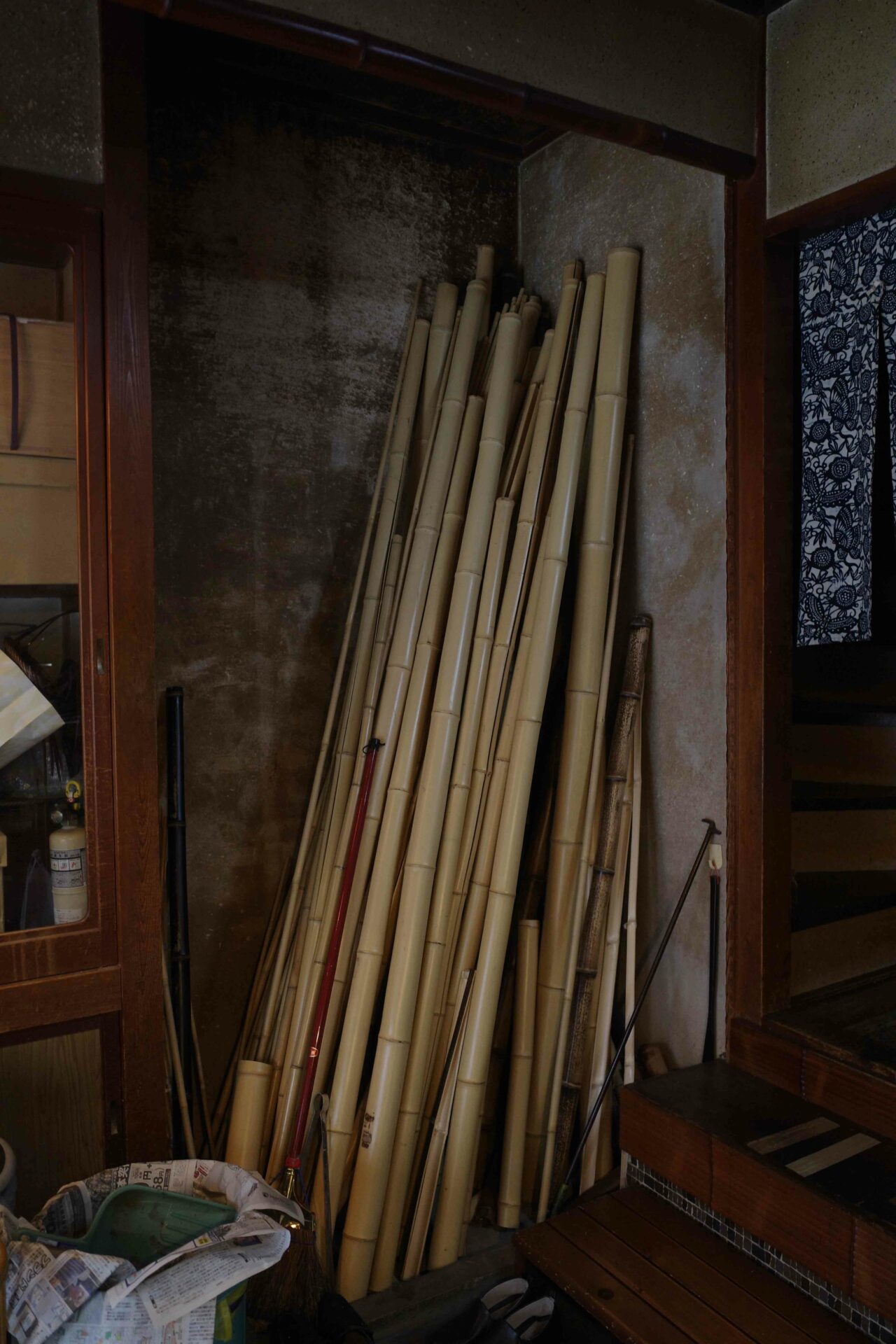
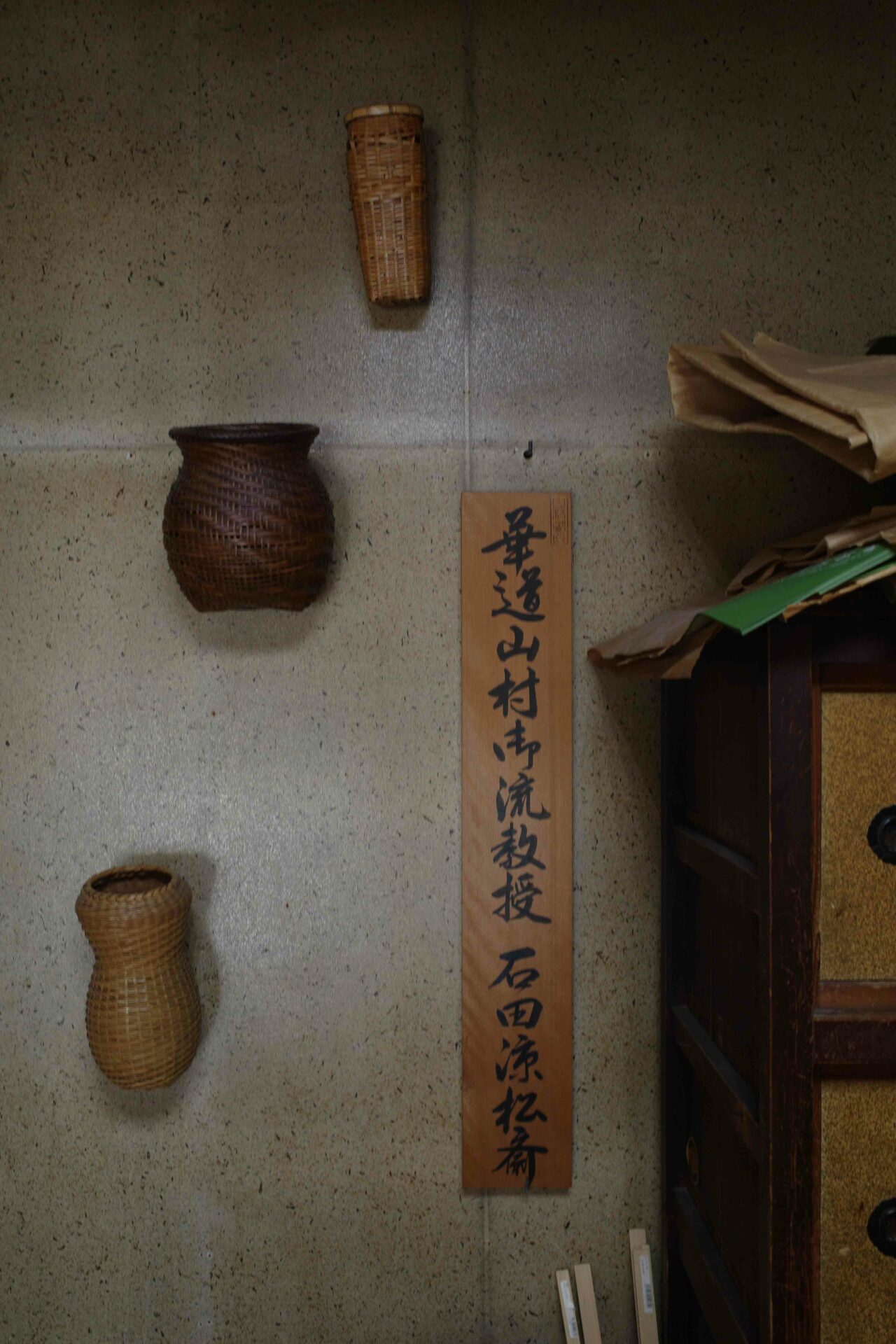

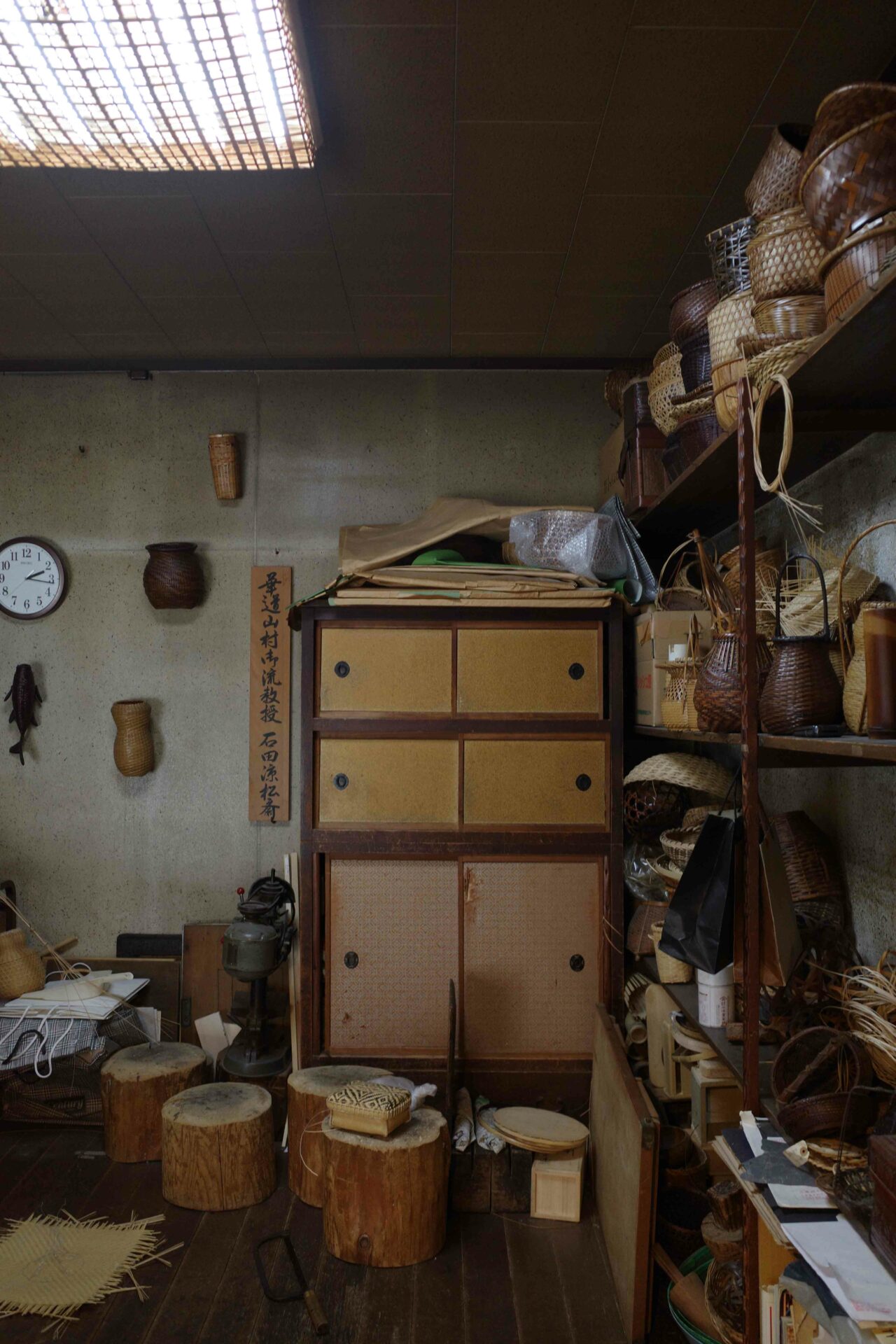
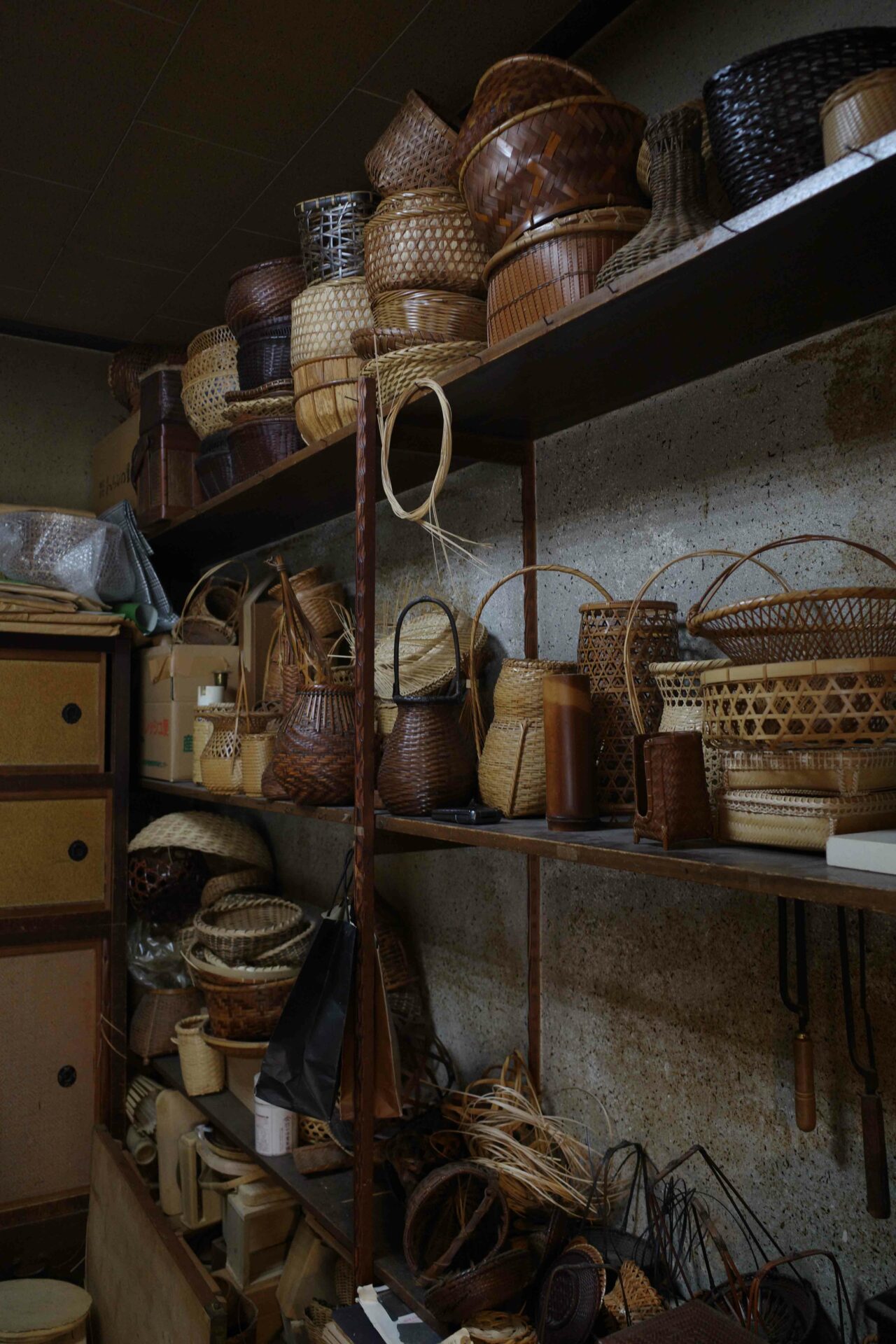
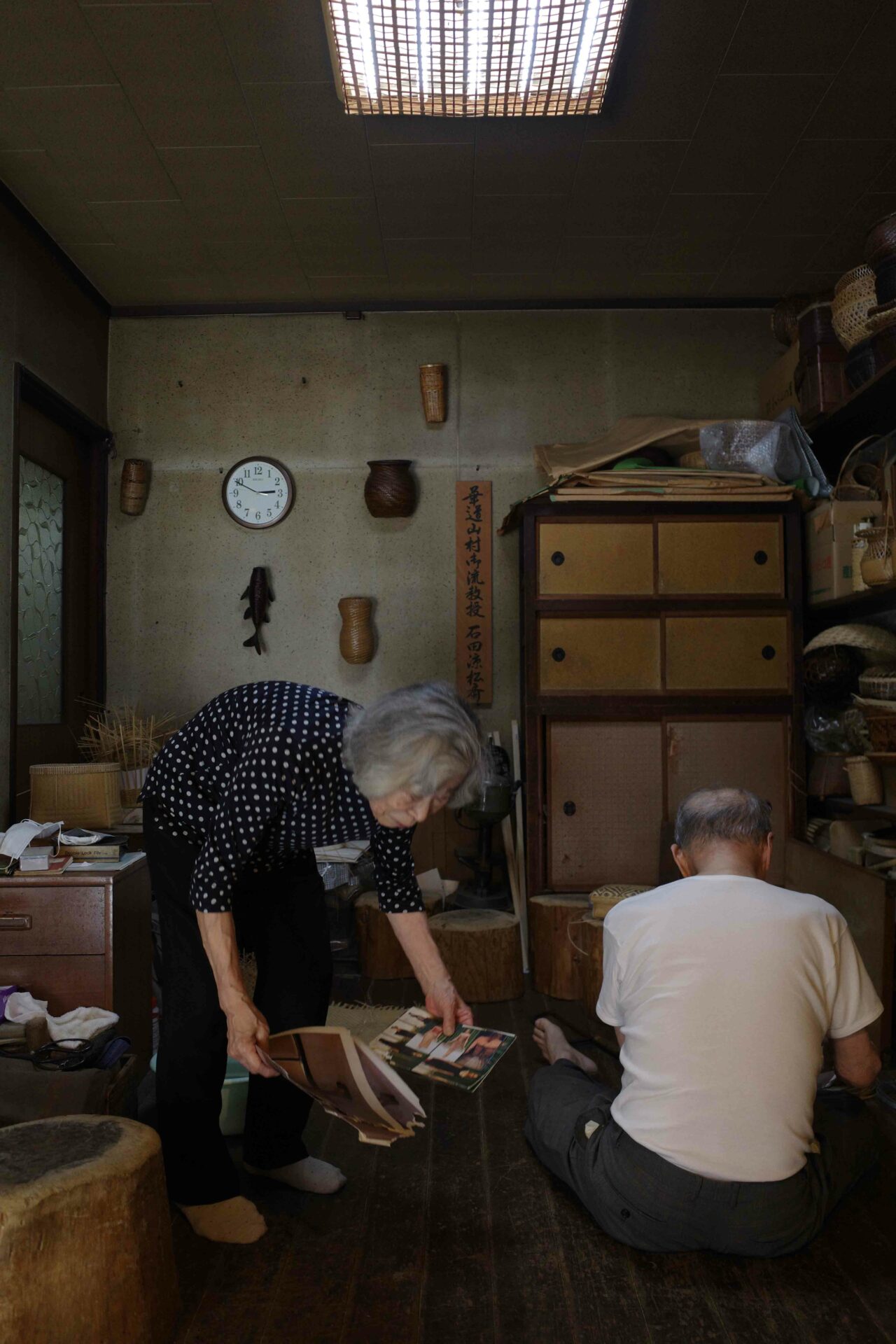
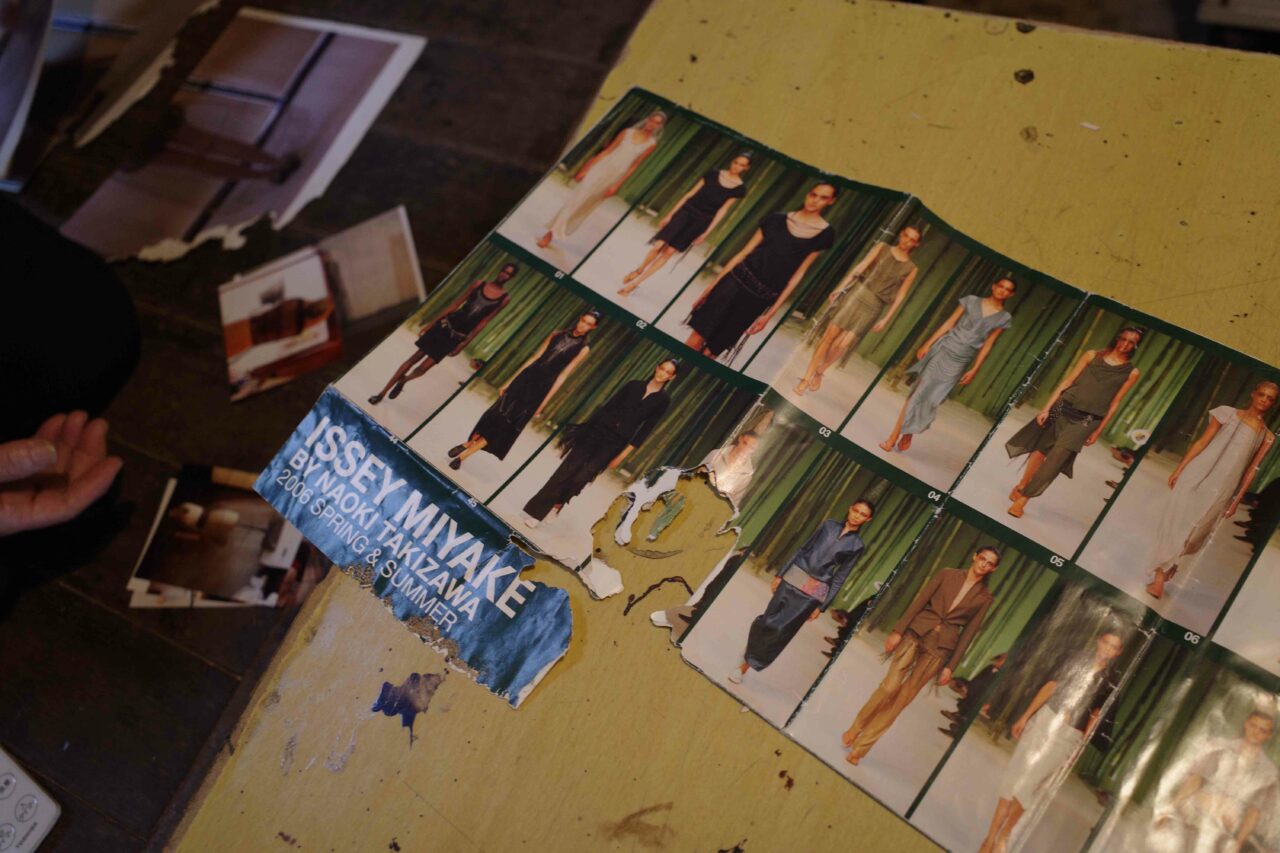
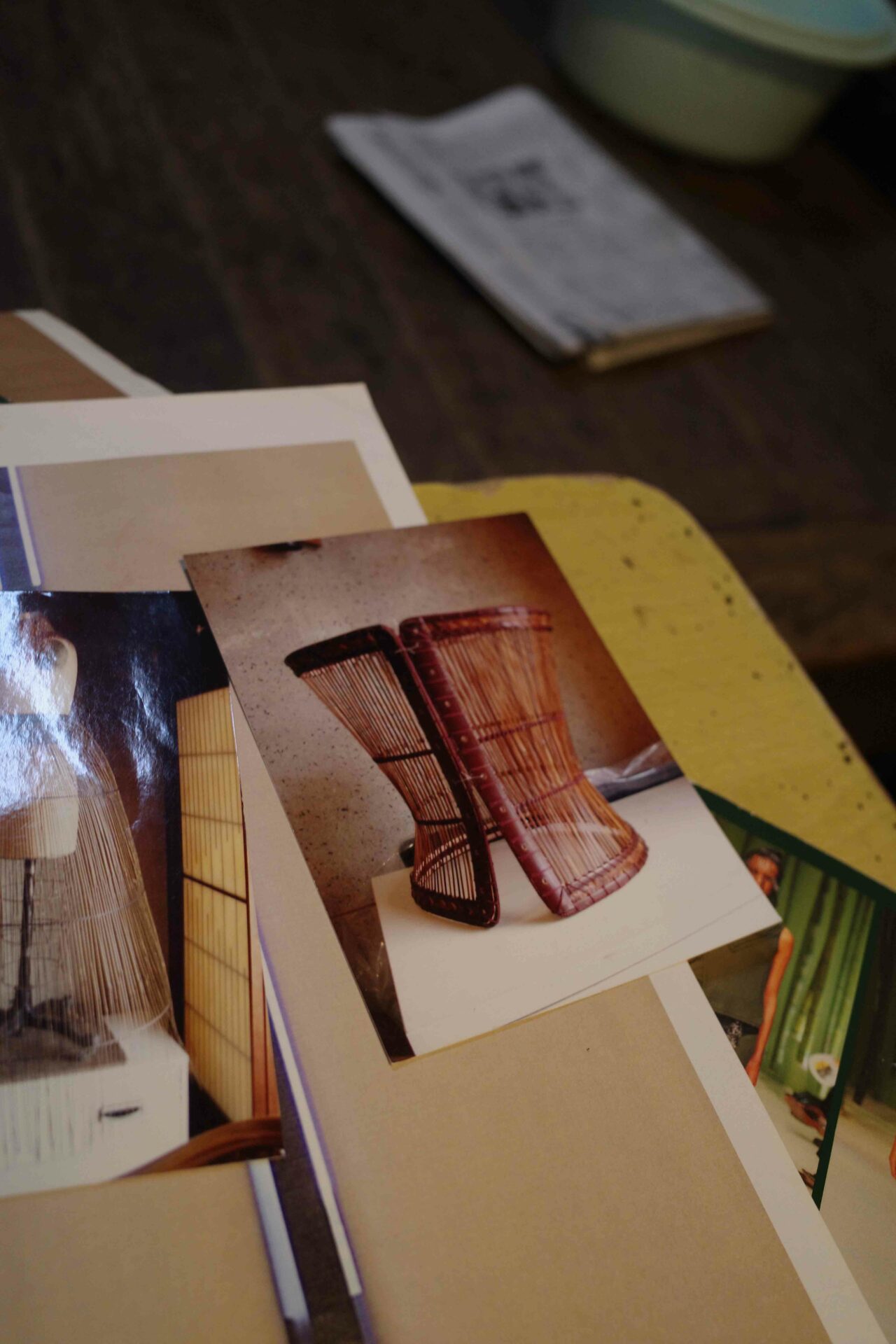


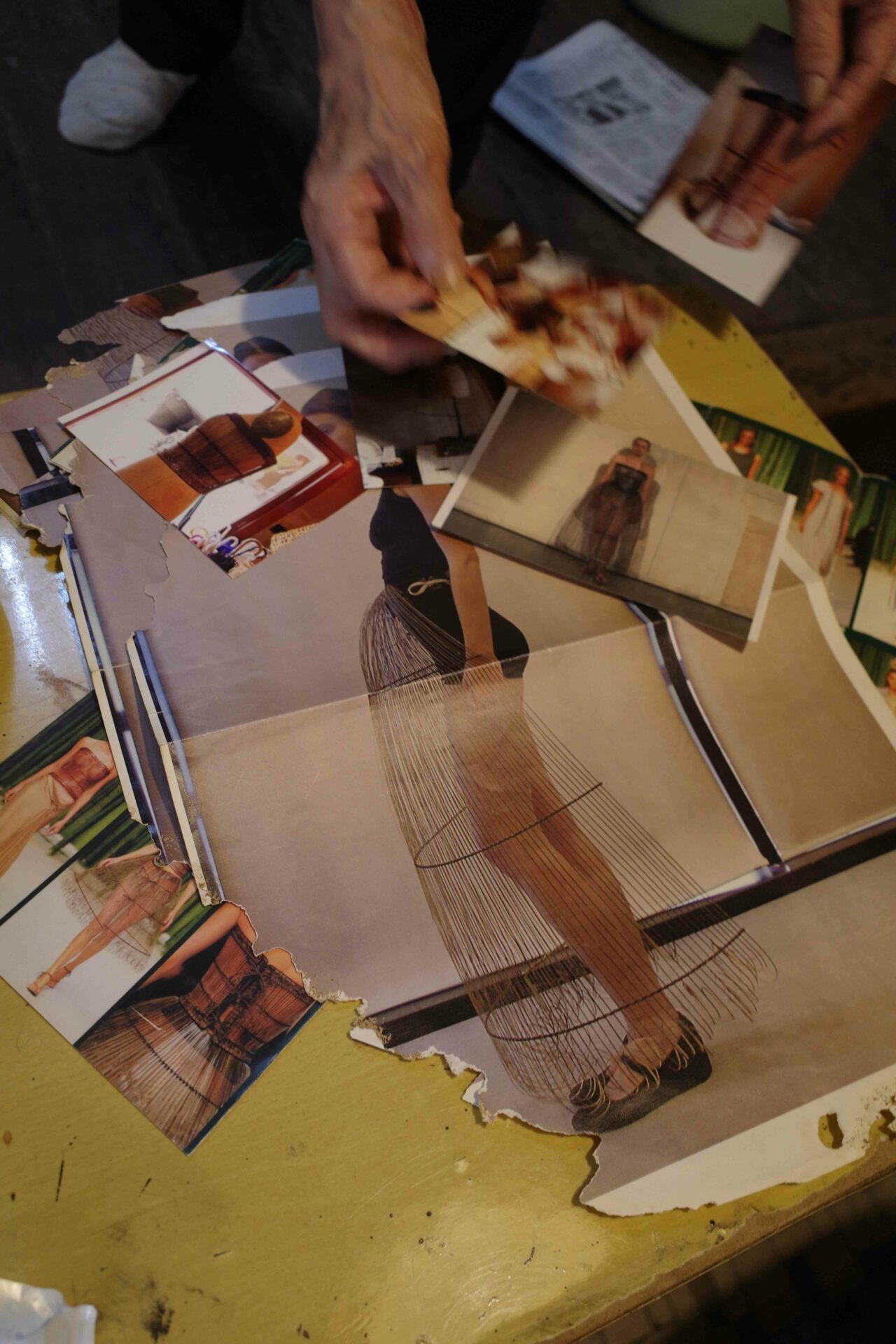



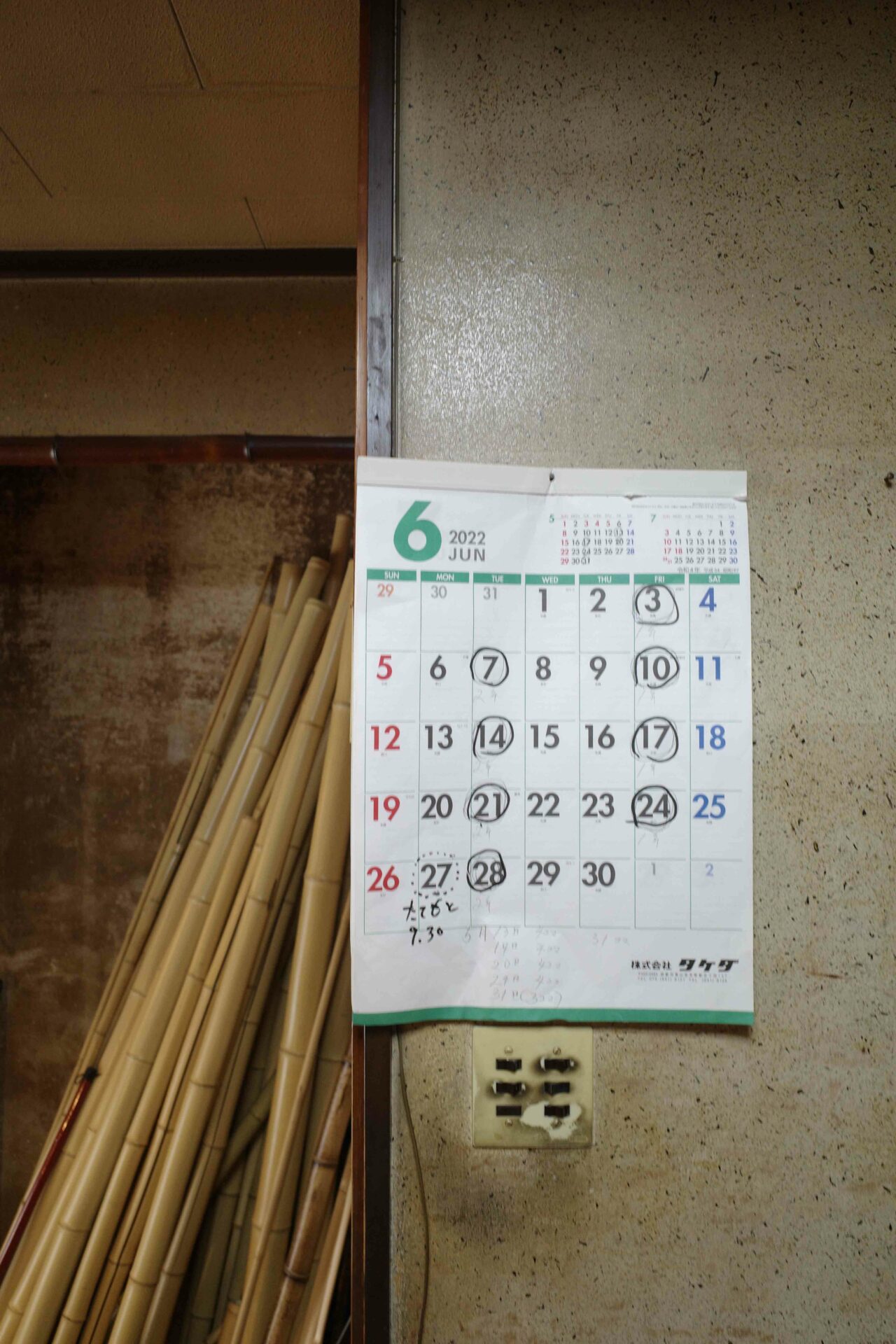
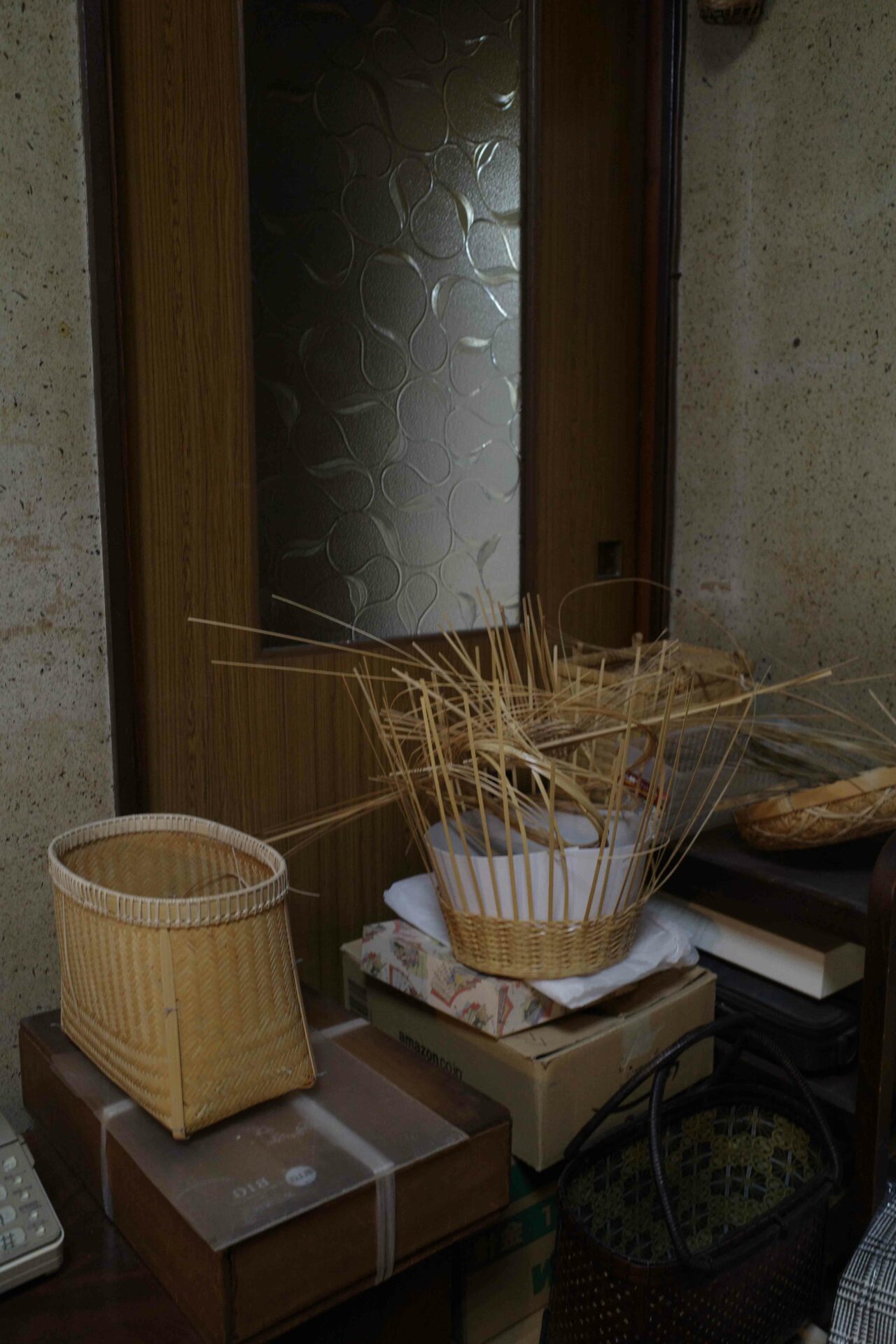
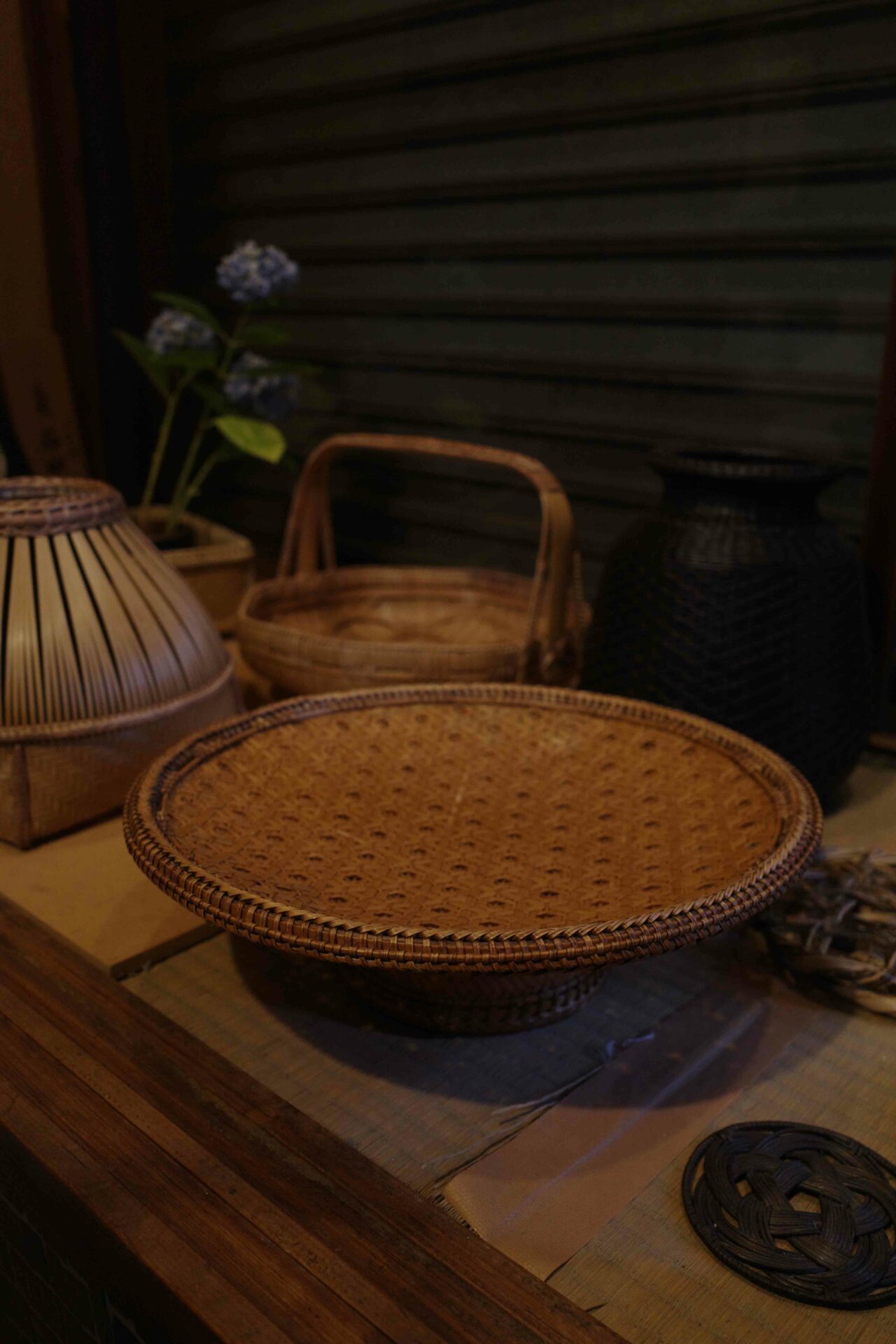
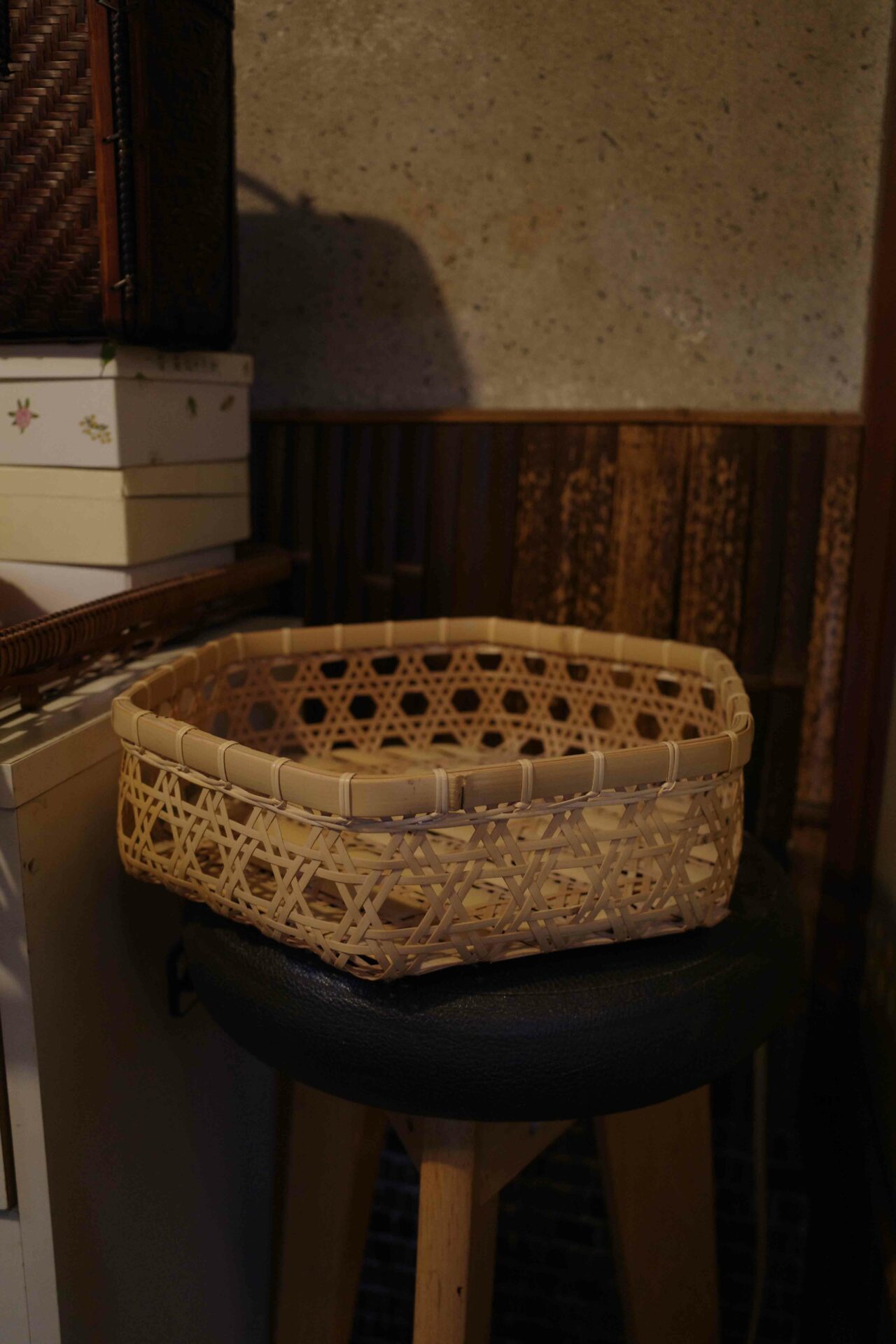
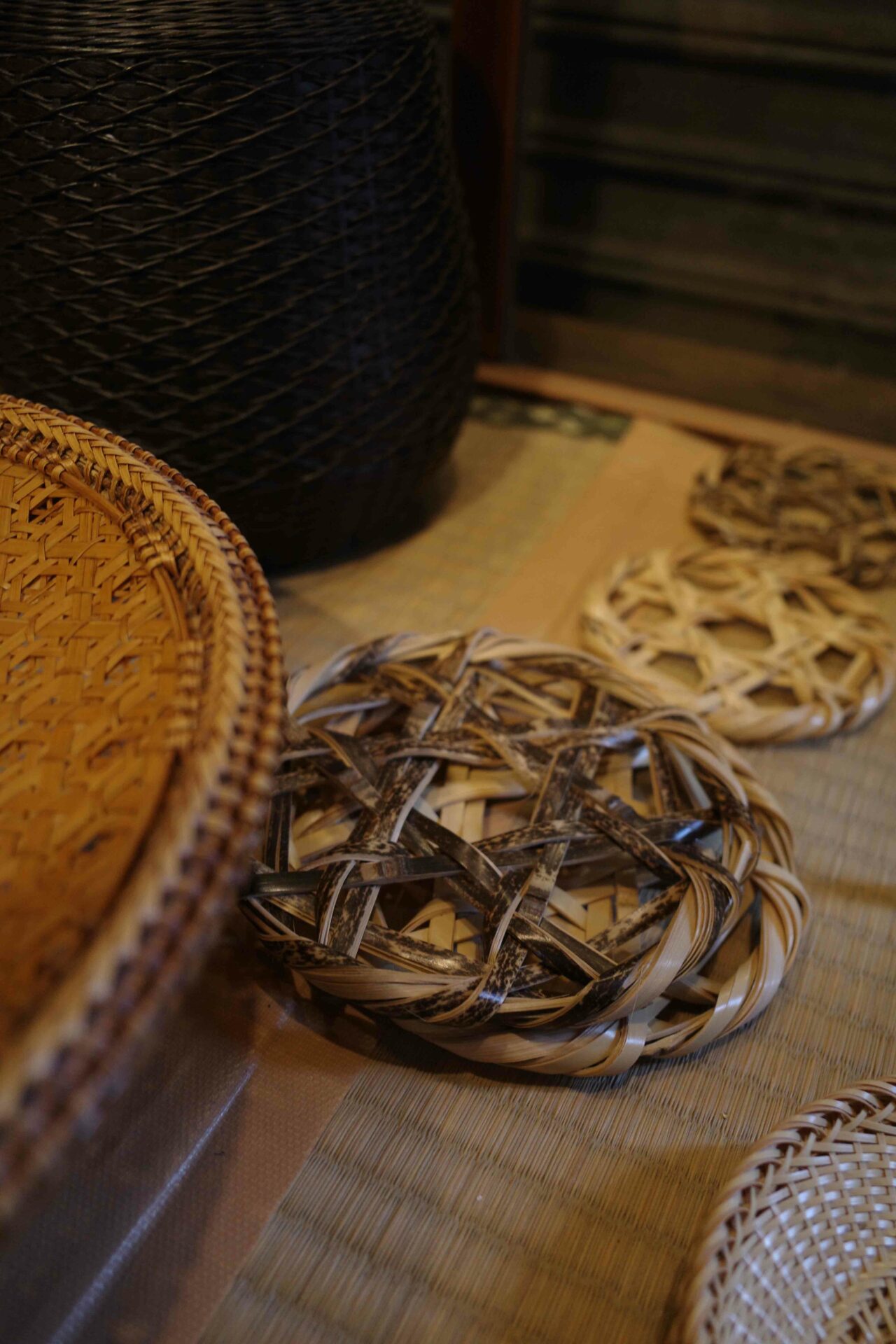
ISHIDA BAMBOO CRAFTS STORE
石田竹工芸店
〒605-0813 Kyoto, Higashiyama Ward,
松原通大和大路東入二丁目 轆轤町101

































